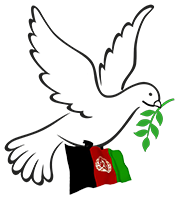Meanwhile, the Afghanistan Chamber of Commerce and Industry urged the officials of the two-countries to boost facilities for the traders on the two sides.
Jamshid Kuchkarov, the Deputy PM– Minister of Economy and Finance of Uzbekistan, called for peace and stability in Afghanistan, saying it is important for the region, and he pledged that his country will cooperate in the transit, trade and agriculture sectors of Afghanistan.
Kuchkarov visited Afghanistan on Sunday and met with several officials of the Islamic Emirate including the Deputy Prime Minister for Economic Affairs, Mullah Abdul Ghani Baradar and the acting Minister of Industry and Commerce.
“The ministers of agriculture and water resources of Uzbekistan are among the delegation and want to use their experiences in Afghanistan,” he told a gathering held at the Arg.
Meanwhile, the office of the deputy PM also said that the two sides discussed trade, transit and economic relations as well as cooperation in railways, transport, the extraction of mines, water management and the facilitation of educational opportunities for Afghan youth.
“The visits of the senior delegation shows that the contacts between the two sides are strengthening. We hope we have good improvements in this meeting, particularly in the field of trade and transit,” Mullah Baradar said.
The acting Minister of Industry and Commerce, Nooruddin Azizi, said that efforts are underway to increase trade between Afghanistan and Uzbekistan to $3 billion and that the Hairatan port will be operating 24/7 from next month.
“The decision has been taken that our trade will be boosted from $600 million to $3 billion because the President has said to increase the trade rate to $2 billion but we are happy that we will increase it to $3 billion,” he said.
Meanwhile, the Afghanistan Chamber of Commerce and Industry urged the officials of the two-countries to boost facilities for the traders on the two sides.
“There was no security before in Afghanistan. There was only poppy cultivation… Afghanistan is now a good field for investment,” said Mohammad Younus Momand, first deputy of the ACCI.
An exhibition of the Uzbekistani products was also inaugurated with the presence of the delegation in the Chaman Hozori park of Kabul.
 Afghanistan Peace Campaign
Afghanistan Peace Campaign